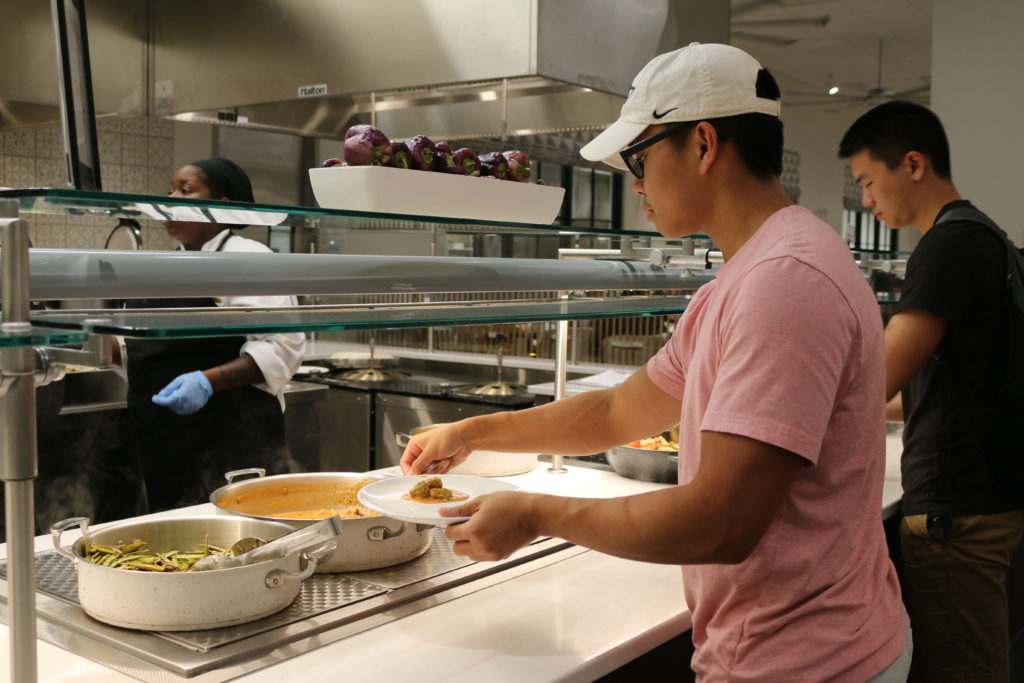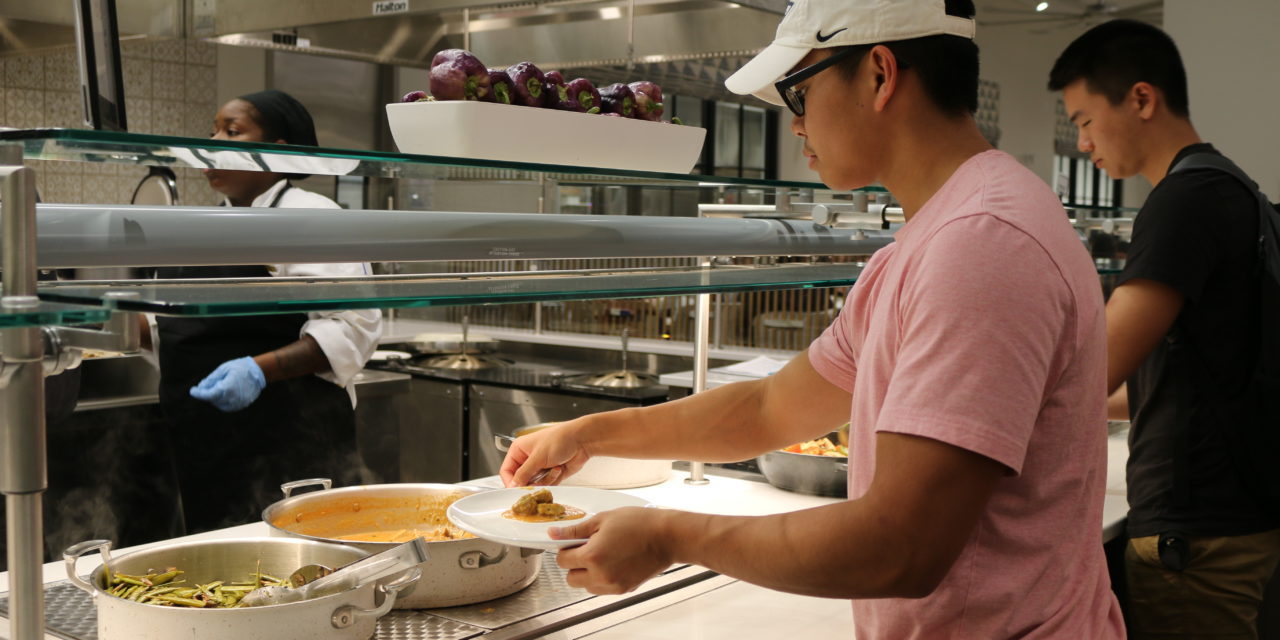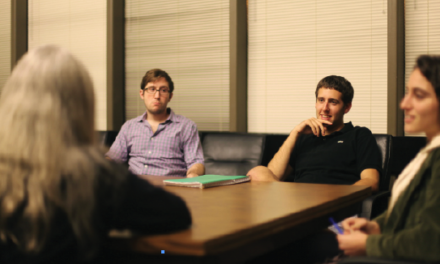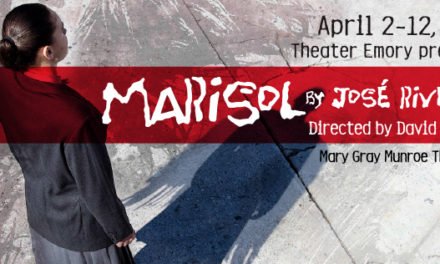Warm, exposed wood panelling adorns the new Dobbs Common Table (DCT), and its palatial spaciousness is a stark contrast to the carnival-esque claustrophobia of the DUC-ling. Unlike the cramped confines of the interim dining center, or the awkward, stair-laden spread of the original Dobbs Market, there is far less shortage of seating. Rounded sofa booths, like one might see at an upscale oyster restaurant, occupy one end of the dining hall, while the rest houses a medley of communal wood tables and coffeehouse-like couches.
“Our hope is that rather than just be a place for sustenance, [the DCT should] be a place for conversation and dialogue,” said Senior Director, Finance, Administration and Operations at Campus Life Dave Furhman.
With each turn, a new station featuring a charmingly pretentious name like something from Ponce City Market, be it “Stem to Root” — the new all-vegan dining area — or “Hearth and Stone” — the new pizza station showcasing stone pizza ovens. Each station has a set of ingredients or vital piece of equipment that dictates the nature of its dishes.
“The Market Table [is] what’s fresh at market, The Flatiron is because of the [Mongolian griddle] … there are general themes [but] each station [is able] to adapt to changing needs and wants of students” Fuhrman said.
During my first visit to the DCT, I was nervous that, though the facility appeared to be more universally appealing to the student population, the quality and variety of the food might deter those with limited dietary needs. Cooking for up to 700 people has trade-offs in quality; the DUC-ling in particular suffered due to its lack of space and resources.
The sheer vastness of dining options subdued my fears. By splitting up diners across a variety of stations and cuisines, no single area is overburdened with people, allowing the desire for quality to eclipse the need for efficiency.
Some diners are lured in by the vivid colors and fragrant aromas of the “Fire and Spice” section, perhaps by the creamy yellow dal tadka that transports students to an Indian restaurant.
“[The Indian food] at ‘Fire and Spice’ … tastes like a lot of the home-cooked food [that] I would eat at my Indian friends’ houses,” Jacob Ribotsky (23C) said.
Others are captivated by the glistening, fatty slices of brisket and sliced rotisserie meats at the “605 Kitchen.” Even still, “Taam Tov” (the kosher station), “Stem and Root” and “Avoiding Gluten” ensure that students with broad dietary needs have better options than bowls of cereal and slices of cold pizza. Bigger efforts have been made to label ingredients in food (such as onion and garlic for Jain diners), overall increasing the accessibility of the facility.
“I do get bored of [eating the same thing everyday] very quickly … but at [the DCT] I can almost eat something different everyday,” Ribotsky said.
Independent of the quality of the facility, some dishes in particular have emerged as new staples on the dining hall menu. The mac and cheese from “Hearth and Stone,” each bite sinfully cheesy and creamy, is a refreshing alternative to Kraft Mac. The old deli has reincarnated as “The Market Table,” with multiple new panini presses, making the DUC-ling’s crowded lines seem like nothing but a bad dream.

Ducal Hoang (21C) serves himself a plate of Indian curry at the “Fire and Spice” station of the new Emory University dining facility, the Dobbs Common Table./ Ayushi Agarwal, Photo Editor
And if fresh-to-order sandwiches don’t sufficiently quench one’s hot food cravings, “The Flatiron” features a large Mongolian grill where students can combine ingredients for cooked-to-order stir fries, omelets or hash browns. The station offers variable alternatives to the DCT’s numerous other options, dispersing the crowds from other, popular sections. The sheer variety of appetizing options — at least as observed during the facility’s initial few weeks — helps curb both crowds and boredom.
Despite the high praise for the new dining facility, some students have experienced issues with the layout and spacing.
“The physical layout is weird … and [during busier times,] there isn’t enough walking room,” Keaton Silver (19Ox, 21C) said.
Silver dined at the facility during the summer, while the space was still undergoing its finishing touches.
Michael Rolland (18Ox, 20B) mentioned that the modified dining center offered a comparatively wider range of options than the “limited” offerings at the new Oxford Dining Center.
“Some people would just skip going to lunch [at the Oxford Dining Center] because the food was bad,” Rolland said.
Though the wooden communal tables and couches at the DCT are a nice change from the heavy chairs of the old dining facilities, the lack of private space can make having a meal with friends a difficult task among the rush hour noise.
Time will tell whether or not the DCT will act as a reliable source for first-year dining, but as the honeymoon period stretches on, it persists as a solid spot for the varied palate. For the time being, the DCT is as good as we should expect a dining hall to be.
Associate Editor | avpraka@emory.edu
Aditya Prakash (20C) is from Dubai, United Arab Emirates, pursuing a double major in neuroscience and behavioral biology and philosophy. He enjoys playing 16-bit indie games and arguing for his pronunciation of the word schedule. He half-jokingly aims to one day join The Onion or Clickhole, but until then he will continue to serve the Wheel.






